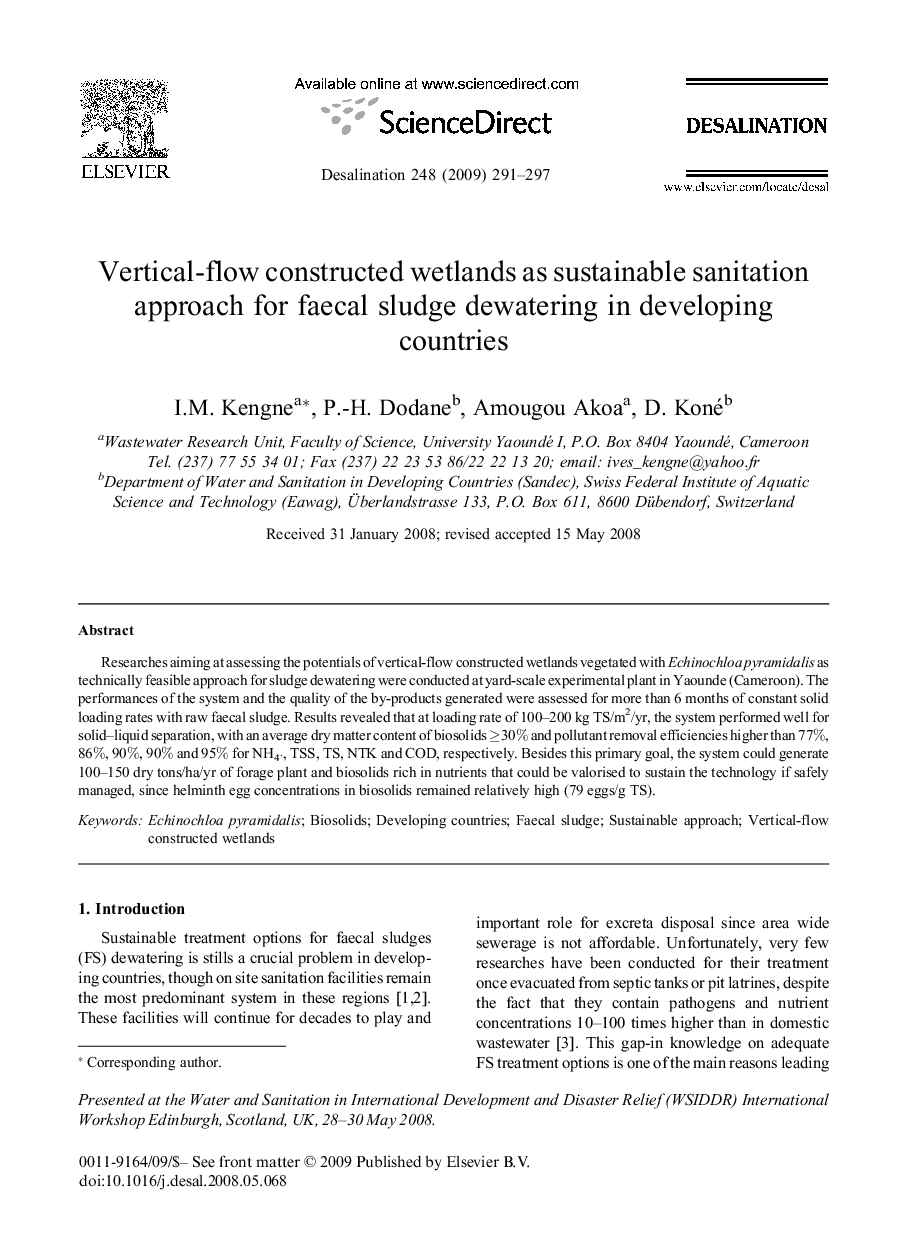| Article ID | Journal | Published Year | Pages | File Type |
|---|---|---|---|---|
| 626381 | Desalination | 2009 | 7 Pages |
Researches aiming at assessing the potentials of vertical-flowconstructed wetlands vegetated with Echinochloa pyramidalis as technically feasible approach for sludge dewatering were conducted at yard-scale experimental plant in Yaounde (Cameroon). The performances of the system and the quality of the by-products generated were assessed for more than 6 months of constant solid loading rates with raw faecal sludge. Results revealed that at loading rate of 100–200 kg TS/m2/yr, the system performed well for solid–liquid separation, with an average dry matter content of biosolids ≥30%and pollutant removal efficiencies higher than 77%, 86%, 90%, 90% and 95% for NH4+, TSS, TS, NTK and COD, respectively. Besides this primary goal, the system could generate 100–150 dry tons/ha/yr of forage plant and biosolids rich in nutrients that could be valorised to sustain the technology if safely managed, since helminth egg concentrations in biosolids remained relatively high (79 eggs/g TS).
